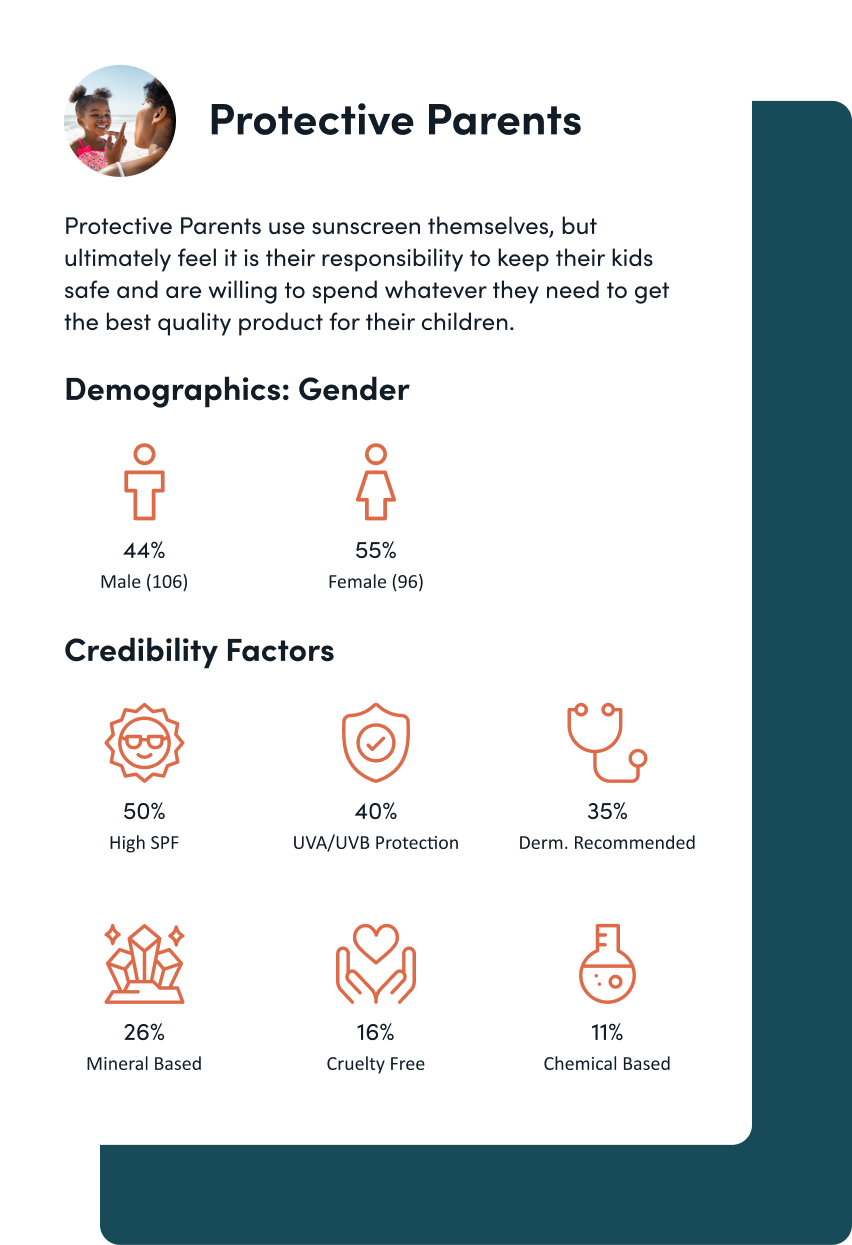Segmentation
Divide your target market and conquer
Brands that strive to be all things to all people struggle to maintain differentiation. Segmentation equips brands with organizational focus, drives audience targeting and activation decisions, and can serve as a powerful tool for innovation and brand expansion.
Our approach to segmentation
Each of Langston’s modules gives us potential “ingredients” that we can use to identify and build segments. For example, the Screener and Respondent Characteristics modules shed light on important demographic and general attitudinal variables. The Category Engagement module surfaces how one does research within the category, which channels they purchase from, and what drives trust for them in brands. The Consumer Needs module illuminates what goals consumers are trying to accomplish – both in their daily lives and within your category. And the Funnel and Category Sizing modules give us insight into how consumers are spending money and with whom.
We use these ingredients to run hundreds of exploratory analyses to understand how our respondent-level data (usually consisting of between 500 and 1,000 columns of data) naturally cluster. To do this, we leverage advanced statistical analysis, including variable reduction techniques, k-means clustering, regression analysis, and descriptive statistics. Through this process, we build an intuition for how variables naturally group and how they move together. We’re of course “driving” the process, but the computer is doing all the work. We then compile output from the “Data Science” phase and make sense of it all in human terms, and use a set of variables in the survey that provide a clean, straightforward, and reproducible path toward segmenting the market. Finally, we apply human-centered labels, names, descriptions, images, and more to bring the segments to life.
Our segmentation philosophy
Rooted in what drives people
The Mistake: All too often, researchers segment markets based on demographic variables, such as gender, age, and income. We believe this approach is misguided because important details about what, how, where, and why consumers make purchase decisions or engage with categories are lost.
Langston’s Approach: Segments should be derived based on underlying attitudes, needs, and behaviors of consumers in a market. Doing so ensures that segments can be aligned with consumer-centric product development, marketing, and brand strategy.
Robust and replicable
The Mistake: Most segmentations are derived using voodoo statistical procedures, making it impossible to accurately identify consumers in the open market. Segmentation “typing tools” thus fail in allowing for reproducibility of results.
Langston’s Approach: While we apply sophisticated statistical techniques throughout the segmentation research journey, we root our final segmentation identification approach in straightforward choice-based methodologies. Our approach results in robust and replicable segments.
Foundational
The Mistake: Segmentation reports are often too complex to get stakeholders excited and bought-in. As a result, they fall flat and are forgotten about within three months of delivery.
Langston’s Approach: We deliver engaging, sticky segmentation studies with interactive ways of presenting quantitative data. Doing so creates foundational research that is regularly used and referenced.
Actionable
The Mistake: The biggest source of dissatisfaction with segmentations is that they do not tie insights to strategy and actions.
Langston’s Approach: We believe that research conducted solely for the sake of learning has its place: a university. Consumer insights research in a business setting must have actionable implications. We tie segmentation studies to business objectives to ensure our research deliverables can guide decision-making and galvanize change.
Meet our go-to Segmentation Modules
Every module can be used in a Langston Segmentation Study. Yet there are a handful that we find work best in creating the foundational segmentation research most brand managers, marketing executives, and business strategist seek.
Below are the most commonly used modules in our segmentation studies.
-

Category Engagement
Discover how consumers engage with your category (like where they are learning about brands, how they are buying products and more).
-

Feature and Benefit Testing
Discover which features and benefits messaging hooks will most effectively resonate with and convert consumers.
-

Means-End Laddering
Quantify the importance of functional attributes, benefits of those attributes, and overall product benefits.
-

Consumer Needs
Quantify the prevalence, importance, & metness of consumer needs. This module is Langston’s modified Jobs-To-Be-Done (mJTBD) approach.
Explore related case studies
-

Big Spenders on Athletic Apparel: How to Win with the Influential Minority that Spends the Most
A small group of consumers is driving big change. This study reveals how the top spenders in athletic apparel are shaping the future of the category.
-

Sun Protection Audience Research
A deep dive investigation to better understand consumer behaviors in the sun care space.





